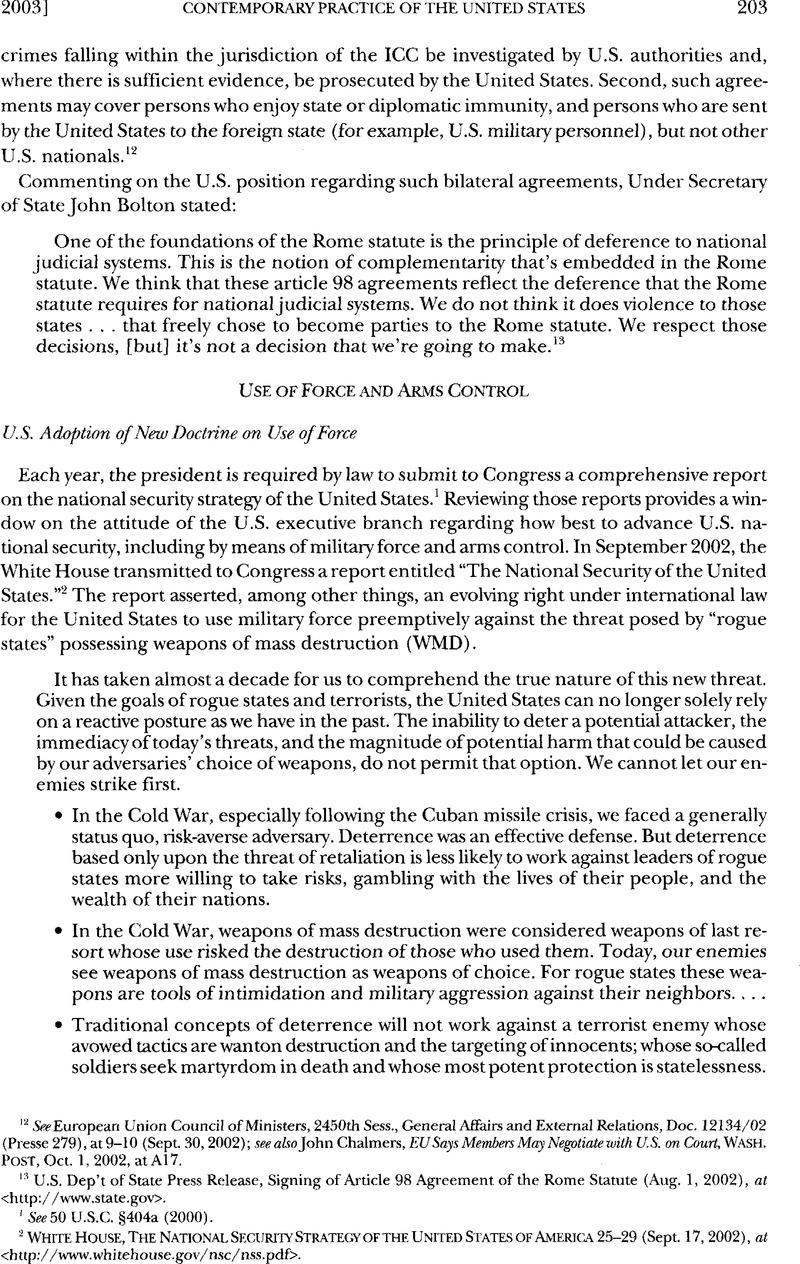Published online by Cambridge University Press: 10 March 2017

1 See 50 U.S.C. §404a (2000).
2 White House, The National Security Strategy of the United States of America 25-29 (Sept. 17,2002), at <http://www.whitehouse.gov/nsc/nss.pdf>.
3 Id. at 15. For adverse reactions by European allies to the new doctrine and other Bush administration actions perceived as unilateralist in nature, see Frankel, Glenn, New U.S. Doctrine Worries Europeans, Wash. Post, Sept. 30, 2002, at A1 Google Scholar. For application of the doctrine in the context of a strategy focused specifically on weapons of mass destruction (WMD), see White House, National Strategy to Combat Weapons of Mass Destruction (Dec. 2002), at <http://www.whitehouse.gov/news/releases/2002/12/WMDStrategy.pdf>. It states, in part:
Because deterrence may not succeed, and because of the potentially devastating consequences of WMD use against our forces and civilian population, U.S. military forces and appropriate civilian agencies must have the capability to defend against WMD-armed adversaries, including in appropriate cases through preemptive measures. This requires capabilities to detect and destroy an adversary’s WMD assets before these weapons are used.
Id. at 3. The Bush administration reportedly included a classified appendix, envisaging preemptive strikes against specified states and terrorist groups (such as Iran, Libya, North Korea, and Syria) that are close to acquiring weapons of mass destruction or long-range missiles capable of delivering them. See Allen, Mike & Gellman, Barton, Preemptive Strikes Part of U.S. Strategic Doctrine, Wash. Post, Dec. 11, 2002, at A1 Google Scholar.
4 Haass, Richard N., Director, U.S. Dep’t of State Policy Planning Staff, Sovereignty: Existing Rights, Evolving Responsibilities, Remarks at Georgetown University (Jan. 14, 2003)Google Scholar, at <http://www.state.gOv/s/p/rem/2003/16648pf.htm>.